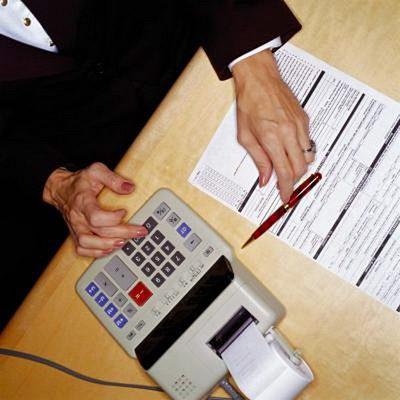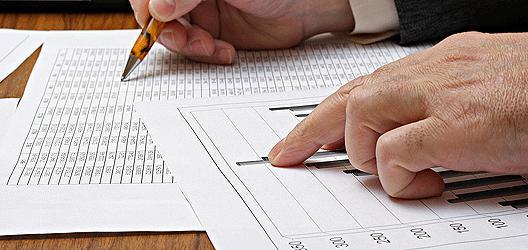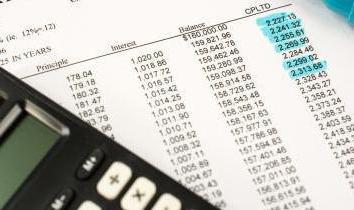Intangible assets - this is a special group of funds that have value and generate income or create conditions for profit. However, they do not have physical content. Let us further consider how accounting for depreciation of intangible assets is carried out. 
general characteristics
In accordance with Art. 138 Civil Code, intangible assets are investments in financial assets that have been used for a long time in economic activity and are profitable or create the conditions for the normal functioning of the enterprise and its receipt of income. This category, in particular, includes rights to intellectual property, industrial property, a trademark, etc. Starting January 1, 2001, a new accounting provision was introduced - PBU 14/2000. In this regard, approaches to the qualification of funds, as well as to their accounting, have been changed.
Main signs
Intangible assets of enterprises are funds that meet the following requirements:
- Lack of material expression.
- Possibility of identification.
- Use in the production of goods, the provision of services or the performance of work for the implementation of managerial functions.
- Acquisition for personal consumption, not subsequent sale.
- Use over a long time (more than a year).
- The ability to make a profit.
Intangible assets must also be accompanied by documents confirming their presence and the exclusive right of the owner. It can be a patent, certificate and so on. 
Key categories
Since January 1, 2001, intangible assets include exclusive rights:
- Patent holder for an industrial design, invention, utility model.
- The author on PC programs and infobases.
- Patent holder for selection achievements.
- The owner of the service mark and trademark, the name of the place of origin of products.
- On the topology of integrated circuits.
In addition, the category of funds considered includes:
- Organizational expenses. They are costs related to the formation of an enterprise, recognized in accordance with the constituent documentation as participants' contributions to the share (authorized) capital.
- The business reputation of a legal entity. In accordance with paragraph 17 of Regulation 14/2000, it is defined as the difference between the price of the enterprise (property complex) and the value of all its obligations and assets on the balance sheet.
Admission
To date, there are no specific recommendations regarding the documentation of the movement of intangible assets. In this regard, economic entities should independently develop forms of accounting. For example, the acceptance certificate can be executed according to the rules provided for fixed assets. The basis will be the typical form of OS-1. The acceptance certificate shall reflect the value of the received funds, the duration of their validity period. In addition, the document indicates the developed norm at which depreciation of intangible assets is carried out. Other details necessary for a uniform calculation of depreciation for created or received objects are also included in the act. 
Reporting
In accordance with the current instruction on the use of the Chart of Accounts for accounting of operations of the financial and economic activities of an enterprise, in order to summarize information on the presence and movement of intangible assets that are the property of an economic entity, the application of ct. 04. This account is a balance sheet.The debit balance shows the value of intangible assets owned by the enterprise on the basis of ownership. Turnover DB reflect the amount received in the organization funds. This may be a purchase, construction, and so on. Loan turnover reflect changes in the value of funds. The price may be affected by depreciation of intangible assets or their retirement, depending on their type and the used financial policy at the enterprise.
Initial assessment
It is defined in the following ways:
- By agreement of the parties. This option applies to objects that have been contributed by members of the company as a contribution to capital.
- According to the actual expenses incurred for the purchase or preparation for use. This method applies to objects that were received for a fee from third-party companies and citizens.
- Expert way. This option is applicable to objects received from other persons free of charge.
Nuance
If the organization has several types of intangible assets, the cost of which is significant, it is advisable to form subaccounts for each of them in accordance with the classification of funds used at the enterprise. For example, it could be:
- Subch 04-1 - for intellectual property.
- Subch 04-2 - for the rights to use the resources of nature.
- Subch 04-3 - for deferred costs.
- Subch 04-4 - for other objects.
Analytical accounting is conducted for individual objects and types of intangible assets. 
Posting
The reflection of intangible assets, which are made by the participants as a contribution to the capital of the enterprise, is carried out as follows:
- Db sc 08, summarizing information about investments in fixed assets.
- Cd 75, showing settlements with the founders.
After the objects are put into operation, a record is made:
- Db sc 04
- Cd Cf. 08.
Accounting for acquired assets is carried out on an additional subaccount to the account. 08. The initial cost of funds received free of charge is determined in accordance with the market price on the date of their acceptance on the balance sheet of the enterprise. The capitalization of intangible assets, which were purchased free of charge from third-party organizations and citizens, and also came from government structures in the form of subsidies, is carried out in accordance with DB cf. 04, corresponding to n. 91, summarizing information about other income. The company can capitalize their receipt and on the count. 98, reflecting the profit of upcoming periods. Subsequently, when the accrual of depreciation of intangible assets will be carried out, the organization writes off income to the account. 91. The company pays VAT on the acquired funds. In this case, the recording is made in dB sc. 19, corresponding to accounts 60 and 76. After the deduction of the obligatory payment, it is debited from Cd.acc. 19 in dec. 68 ("Calculations on fees and taxes") in the corresponding subaccount. 
Depreciation of intangible assets
It is calculated monthly at the rates determined based on the initial cost and useful life of the facilities. If the latter is unknown, then a 20-year term can be accepted. Moreover, it should not exceed the period of existence of the enterprise. Depreciation of intangible assets is accounted for under the account 05. The exception is objects for which amounts are written off directly in cd. 04. In this case, when the depreciation of intangible assets is calculated, the transactions are compiled using the accounts of the generalization of costs without applying inv. 05. This article is considered a passive balance sheet. It forms a credit balance. Cf. 05 is used to summarize data on depreciation accumulations of intangible assets, which are the property of the enterprise. Deferred amounts are recorded for. Cd 05 shows the accrual.
Calculation Methods
There are the following ways to depreciate intangible assets:
- Linear.
- Reduced Balance Method.
- Proportional. It involves the cancellation of stats in proportion to the volume of work or production.

It should be noted that using the first method, the depreciation of fixed assets is also calculated. Intangible assets enter the enterprise at initial cost.With the linear method, the annual amount of charges will be equal to this price multiplied by the norm. It is determined by the number of years of the useful life. Using the method of reduced balance, the annual amount is calculated based on the residual value of funds at the beginning of the year and rates. In a proportional version, a natural indicator of the quantity of products in the reporting period is used, as well as the ratio of the initial price of funds to the estimated volume of goods over the entire useful life. No fully accrued intangible assets are accrued. Moreover, the funds themselves are reflected in the statements in a conditional assessment with the allocation of its amount to the financial result.
Important points
The method selected annually is subject to verification for clarification. This is due to compliance with the requirement of obtaining economic profit from the use of funds. If the calculation of the estimated gain in the coming period has changed significantly, then the selected method of repayment of the initial cost of the object should be adjusted accordingly. Depreciation of intangible assets begins on the first day of the reporting period (month) that follows the one in which the object was capitalized. Amounts are calculated until the price of the asset is fully paid off or until it is debited from the balance sheet. During the useful life, the depreciation of intangible assets and its calculation are not suspended. 
Specificity
Depreciation of intangible assets is calculated to pay off the cost of funds having a certain useful life. The term is the time period, expressed in months, during which the organization involves the use of objects for profit. By some means, reliably determine this period. They are considered assets with an indefinite useful life and are not depreciated.
Determination of the period of use
It is installed in accordance with:
- The duration of the rights of the enterprise to the result of intellectual work or means of individualization and duration of asset control.
- The expected period of use of the facility during which the company expects to derive economic benefits.
Documentation Reflection
After depreciation of intangible assets is accrued, the amounts are shown by the following entries:
- Db sc 20, 25, 44, 26, 08, 97, 29.
- Cd 05.
If, for one reason or another, the calculation was not performed, if an error is detected, the adjustment is carried out in the period in which the objects were identified:
- Db sc 91, subch. 91-2.
- Cd 05.
Correction amounts carried forward to 91 are included in other expenses of the enterprise. The same expenses include depreciation amounts for intangible assets, which were provided for use by the licensor (copyright holder). The value of goodwill acquired, in accordance with paragraph 44 of Regulation 14/2007, has been repaid over twenty years. An exclusively linear method is used. The write-off of the depreciation amount for objects that were withdrawn from the enterprise as a result of sale, gratuitous transfer by agreement of exchange, gift, in connection with the transfer as a contribution to the authorized capital and so on, is reflected in the following offsetting accounts:
- Db sc 05.
- Cd 04, subch. "Retirement of intangible assets".
Redemption of the initial cost of intellectual property is carried out using the statement. It is compiled every month.



